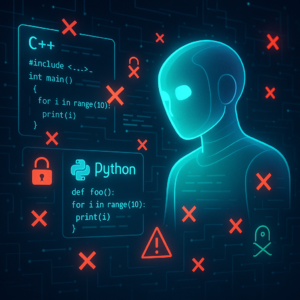Harmonizing AI Governance: How the World is Trying to Tame the Generative AI Beast

Harmonizing AI Governance: How the World is Trying to Tame the Generative AI Beast
Welcome to the rapidly evolving universe of Generative AI! Remember when we used to marvel at talking computers in sci-fi movies? Well, that future is now—with Generative AI like ChatGPT revolutionizing the way we create and communicate! But amidst this technological marvel, there’s a pressing need to govern these powerful tools responsibly.
Setting the Scene
As Generative AI (GenAI) snowballs into prominence, it’s not merely changing technology—it’s reshaping society. Think of it as Pandora’s box, where the capabilities range from creating stunning digital artworks to producing realistic text and audio. But with great power comes great responsibility, and that’s where the governance of AI comes in. Amidst the diverse global efforts to regulate this technology, finding a harmonious approach seems to be the holy grail.
A remarkable collective venture by researchers from Singapore Management University offers us a cross-regional perspective on how various parts of the world are trying to govern GenAI through different approaches like risks, rules, or principles. This fascinating study introduces the Harmonized GenAI Framework (H-GenAIGF), a tool designed to lift the veil on these governance mechanisms.
Dive into the World of GenAI Governance
The Governance Jigsaw Puzzle
Imagine trying to assemble a jigsaw puzzle, but every piece comes from a different country with its unique shape and artwork. This is what AI governance looks like globally. Six regions—the EU, US, China, Canada, UK, and Singapore—each display their puzzle piece, attempting to regulate GenAI based on distinct approaches.
1. Risk-based Approach with its safety-first mentality is championed by the EU and US. This ensures that AI systems are reliable and trustworthy, which, in a friendly analogy, is like having a meticulous parent ensuring you wear a helmet before cycling.
2. The rule-based Approach of China focuses on aligning with national values, much like establishing house rules that every family member has to follow.
3. Principle-based Approach of Canada emphasizes the ethical dimensions of AI, ensuring it respects human rights, similar to a guiding compass ensuring moral alignment.
4. In the UK, an outcome-based Approach fosters innovation while keeping things in check, which is similar to providing free rein with a few guardrails.
5. Lastly, Singapore’s risk-principle hybrid Approach ensures a smoother sailing through careful navigation of both safety protocols and ethical considerations.
Unveiling the Harmonized Framework: H-GenAIGF
This study turns a multi-country analysis into a harmonized perspective on GenAI governance. H-GenAIGF is like a Rosetta Stone for understanding AI governance—it decodes different approaches into common processes, sub-processes, and principles. Imagine an all-in-one blueprint helping policymakers and developers align with best practices, ethical standards, and safeguards.
With datasets, model building, content moderation, and ethical considerations covered, this framework identifies gaps and opportunities for alignment in GenAI governance—a must in this globalized tech landscape!
Testing the Waters: A Case Study on ChatGPT
A pivotal application of the H-GenAIGF involves assessing ChatGPT, a leading GenAI model that has taken the world by storm. It’s akin to being a detective looking for clues about how well the system aligns with necessary governance processes.
In this quest for compliance, the study found that while some crucial areas like feedback mechanisms are covered, complexities around data protection, model transparency, and ethical design show gaps. The case study shines a spotlight on specific regions like the EU, CN, and the US, needing to address these governance gaps thoroughly.
Practical Real-World Implications
We’re not just talking tech jargon—let’s ground these findings into tangible, real-world applications. The key to harmonious GenAI governance lies in:
- Building Trust: As users, knowing that GenAI models adhere to ethical and safety standards enhances trust.
- Ensuring Accountability: Policymakers can create effective policies, knowing the frameworks to align models ethically.
- Empowering Users: End-users can confidently utilize AI tools, assured of comprehensive governance mechanisms safeguarding their digital space.
- Encouraging Innovation: Developers can innovate responsibly within agreed-upon guidelines, preserving both creativity and compliance.
Key Takeaways
Let’s wrap up this ai-mazing journey with the critical insights gathered:
-
AI Governance Diversity: Global regions exhibit diverse approaches to AI governance. Though varied, these methods reflect a commitment to embedding ethics and safety in technology.
-
Harmonized Framework: The H-GenAIGF offers a consolidated view of governance mechanisms, seeking to unify regional approaches by mapping out essential processes and principles.
-
Models Need Governance: Using the ChatGPT case, the framework uncovers areas of improvement, emphasizing the necessity for better model transparency and ethical adherence.
-
Call to Action: For developers, policymakers, and users alike, there’s a collective role in ensuring GenAI models operate within a safe and trust-enhancing framework. This framework is a crucial reference point for governance alignment.
Closing Thoughts
The future of GenAI is a story we’re all part of—a story that requires collaboration, innovation, and a shared commitment to responsible governance. With a harmonious network of governance frameworks akin to the H-GenAIGF, the world can ensure GenAI continues to be a boon rather than a bane, elevating society while safeguarding its values.
So, as we interact with AI, let’s appreciate the intricate work being done behind the scenes, ensuring these models evolve responsibly, fostering a safer digital landscape for all.
If you are looking to improve your prompting skills and haven’t already, check out our free Advanced Prompt Engineering course.
This blog post is based on the research article “Navigating Governance Paradigms: A Cross-Regional Comparative Study of Generative AI Governance Processes & Principles” by Authors: Jose Luna, Ivan Tan, Xiaofei Xie, Lingxiao Jiang. You can find the original article here.




